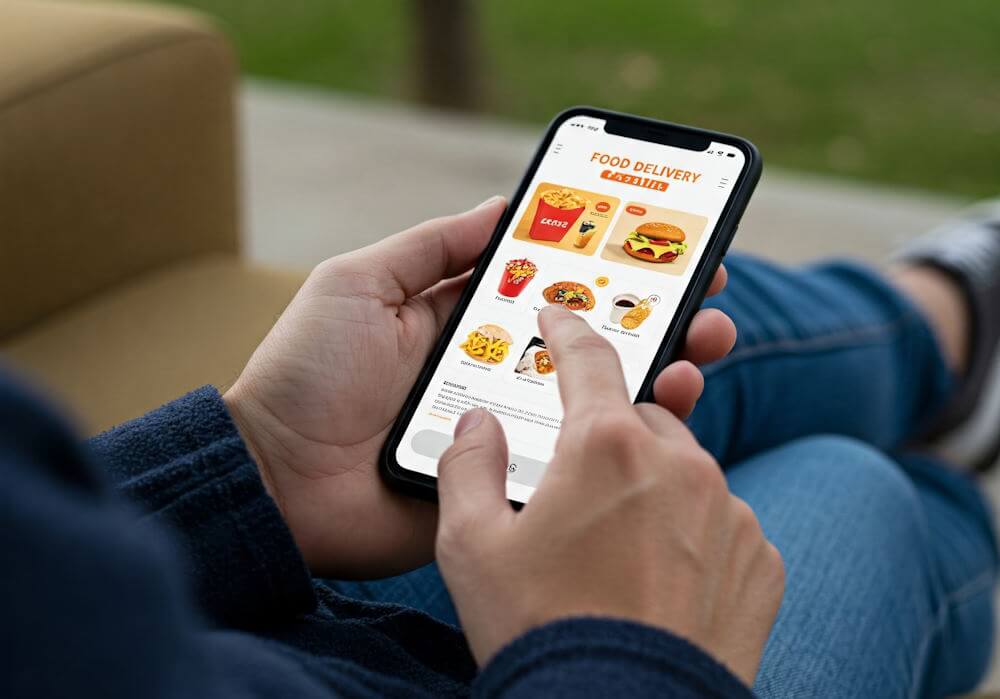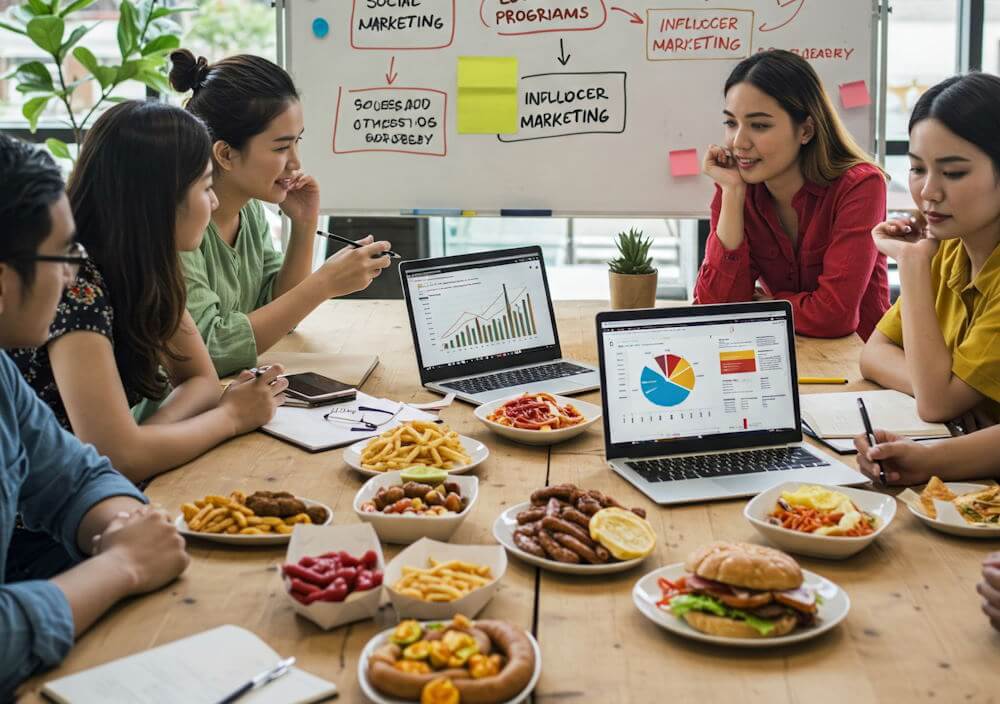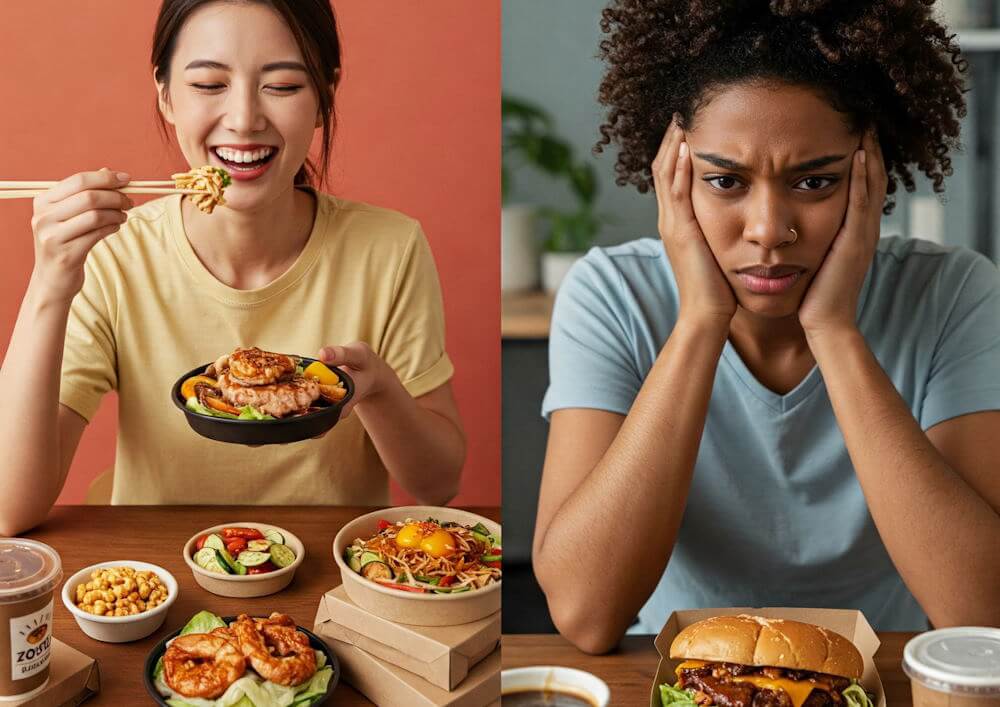The food delivery industry has experienced meteoric growth over the past decade, shaped significantly by alterations in consumer behavior and lifestyle preferences. With an increasing reliance on digital technology, platforms for food delivery have emerged as a crucial service for many urban dwellers. This surge can be attributed to a combination of factors, foremost among them being the desire for convenience and the plethora of options available at customers’ fingertips. Food delivery services have not only simplified the procurement of meals but have also diversified the culinary experiences of users, allowing them to explore various cuisines without leaving the comfort of their homes.
As a result of this rapid evolution, eating habits have shifted markedly. A larger segment of the population now opts for takeout instead of traditional dining, which has implications that extend beyond mere convenience. The accessibility of diverse food options has encouraged more individuals to experiment with their diets, thereby reshaping cultural norms surrounding meal preparation and consumption. Moreover, as consumers increasingly prioritize convenience, many find themselves relying on delivery services for both everyday meals and special occasions. This growing demand presents an opportunity for companies to cater to changing preferences, as well as an obligation to address the accompanying environmental concerns.
However, the convenience provided by the food delivery industry comes at a cost to the environment. The reliance on single-use plastic packaging and containers has been a point of critique, contributing significantly to pollution and waste. As awareness surrounding sustainability issues rises, food delivery companies face mounting pressure to adapt and innovate. The shift towards plastic-free alternatives is not only a response to consumer demands for environmentally friendly options but also an essential step in mitigating the industry’s ecological footprint. Consequently, the evolution of the food delivery sector reflects a broader movement advocating for sustainability in food practices.
The Environmental Impact of Plastic Waste
The pervasive presence of plastic in our environment poses significant dangers to ecosystems and public health. Plastic waste, often seen as a convenience, has grown into a monumental problem, with over 400 million tons produced globally each year. Disturbingly, a considerable portion of this plastic—approximately 91%—is never recycled, leading to alarming rates of waste accumulation.
One of the most pressing issues stemming from plastic waste is pollution. Plastics are not biodegradable; instead, they break down into smaller microplastics that infiltrate soil, waterways, and oceans. It is estimated that around 8 million tons of plastic enter the oceans annually, severely affecting marine life. Aquatic species ingest these microplastics, leading to adverse health effects and bioaccumulation, which can ultimately affect human health through the food chain.
The plastic crisis also poses a threat to wildlife habitats. Animals often mistake plastic debris for food, leading to fatal ingestion and entanglement. Sea turtles, for instance, frequently consume plastic bags, mistaking them for jellyfish, with devastating implications for their health. Additionally, data reveal that at least 1 million marine creatures and countless birds die each year due to plastic-related incidents.
Landfills are another considerable concern. The increasing volume of plastic waste contributes to overflowing landfills, which emit harmful greenhouse gases, contributing to climate change. With estimates projecting that if current trends continue, landfills could be overflowing with plastic waste, the urgency for sustainable alternatives is clear.
Overall, the environmental impact of plastic waste extends far beyond waste management issues. It affects intricate ecosystems and poses a global threat that requires immediate and serious attention, especially as society moves towards sustainable practices.
Consumer Awareness and Demand for Sustainable Options
In recent years, there has been a significant increase in consumer awareness surrounding environmental issues, particularly as they relate to packaging waste and sustainability. This heightened consciousness has motivated consumers to re-evaluate their choices, particularly when it comes to the food delivery industry. A growing number of individuals are recognizing the detrimental effects of plastic pollution on ecosystems and are advocating for sustainable alternatives. This shift in mindset is not merely anecdotal; numerous surveys have illustrated that consumers now prefer eco-friendly packaging when ordering food.
For instance, a recent survey indicated that over 70% of respondents expressed a willingness to pay an additional fee for sustainable packaging options. This demonstrates a clear demand for change, and food delivery companies are starting to take notice. The pressure for sustainable practices is likely to influence not only the materials used for packaging but also the overall approach companies take towards their environmental impact. More consumers are actively seeking out brands that align with their values, prioritizing those that demonstrate commitment to sustainability.
Moreover, consumers are drawn to businesses that showcase transparency regarding their environmental practices. For food delivery services, this often translates into clearer communication about the sourcing and disposal of packaging materials. As such, companies that invest in sustainable practices can enhance their brand reputation and customer loyalty. A report has shown that businesses adopting environmentally responsible practices often experience increased customer satisfaction and retention rates. This reinforces the notion that integrating sustainability into business operations is not only beneficial for the environment but also aligns with the evolving preferences of conscious consumers.
Case Studies of Plastic-Free Initiatives
Numerous food delivery companies have taken significant strides towards establishing plastic-free initiatives, showcasing a commitment to environmental sustainability while meeting consumer demands. One such company, Deliveroo, has initiated a program to eliminate single-use plastic cutlery and straws from their packaging. Instead, they have opted for biodegradable alternatives made from materials such as bamboo and recycled paper. This shift not only reduces plastic waste but also aligns with increasing consumer awareness regarding environmental issues.
Another noteworthy case is that of Just Eat, which has introduced a policy to encourage their restaurant partners to use sustainable packaging. The company has partnered with several vendors who provide compostable and recyclable packaging options. Their transition has not been without challenges, particularly in sourcing adequate supplies and ensuring that all restaurant partners comply with their new packaging guidelines. However, the positive feedback from customers reassures them that environmental responsibility resonates with their user base.
Meanwhile, Uber Eats has taken an innovative approach by allowing customers the option to select “no cutlery” at checkout, thereby reducing unnecessary plastic use. They have also launched a pilot program collaborating with restaurants that are committed to sustainable practices, utilizing packaging made from materials like corn starch or mushroom mycelium. This initiative not only helps in mitigating plastic waste but also raises awareness about sustainable packaging among customers.
In these examples, the challenges faced by these food delivery companies during their plastic-free transitions include sourcing sustainable materials, ensuring consistent quality, and managing customer expectations. However, the benefits of adopting such initiatives, both in terms of brand loyalty and environmental impact, signify a promising direction for the food delivery sector. These case studies illustrate that by paving the way for innovative and sustainable practices, food delivery companies can significantly reduce their plastic footprint and encourage broader industry change.
Regulatory Pressure and Industry Standards
In recent years, food delivery companies have faced increasing regulatory pressure to reduce their reliance on single-use plastics. Various governments around the world have implemented local bans on plastics, specifically targeting items such as straws, cutlery, and containers. These regulations often stem from a heightened awareness of the environmental impact associated with plastic waste, particularly in oceans and landfill sites. As a result, companies must adapt their practices to stay compliant with these laws.
Proposed legislation at both local and national levels has further accelerated this shift. Lawmakers are not only pushing for bans on specific items but are also introducing incentives aimed at encouraging sustainable practices among businesses. This regulatory environment compels food delivery services to explore alternative packaging solutions, such as biodegradable materials or reusable containers. By adhering to these emergent standards, companies not only align themselves with governmental expectations but also enhance their brand reputation among environmentally conscious consumers.
Moreover, several industry groups are establishing voluntary standards that promote sustainability across the food delivery sector. These initiatives encourage companies to proactively seek out innovative alternatives to plastic packaging. As part of their corporate social responsibility strategies, many organizations are committing to a complete phase-out of single-use plastics by a given deadline. This not only minimizes the risk of non-compliance with future regulations but also positions companies as leaders in the sustainability movement.
Ultimately, the combination of regulatory pressure and evolving industry standards plays a pivotal role in shaping the strategies of food delivery companies. By prioritizing compliance and sustainability, these companies are not merely responding to external demands; they are also paving the way for a more sustainable future in the food delivery landscape.
The Role of Technology and Innovation
As the food delivery industry grapples with the increasing demand for sustainable practices, technology and innovation have emerged as critical forces propelling the shift towards plastic-free solutions. The advent of biodegradable materials represents a significant breakthrough, offering alternatives to traditional plastic that decompose more efficiently, thereby minimizing environmental impact.
For instance, innovations in plant-based materials have led to the creation of packaging that not only serves as an effective barrier for food products but also breaks down in a natural environment. These advancements enable food delivery companies to reduce their reliance on single-use plastics, thus contributing to the global push for sustainability. Additionally, research and development in materials science continue to unveil new possibilities, including bio-based polymers and compostable fibers, that enhance the performance and feasibility of eco-friendly packaging.
Moreover, reusable packaging systems have gained traction in the food delivery sector as a viable method for reducing plastic waste. Companies are investing in technologies that facilitate the efficient exchange and cleaning of reusable containers, creating a circular economy that encourages repeat use. Digital tracking and smart logistics systems play a pivotal role in this process, enabling effective management of containers, minimizing losses, and ensuring cleanliness standards are met. Mobile applications and user-friendly interfaces further streamline the experience, allowing customers to participate actively in the sustainability efforts.
While implementing these technologies poses its challenges, such as the need for infrastructure development and consumer adaptation, the potential rewards are substantial. Improved sustainability practices not only appeal to environmentally conscious consumers but can also lead to operational efficiencies and cost savings in the long run. In essence, technology and innovation are essential drivers, fostering a smarter and more sustainable food delivery landscape that moves decisively towards plastic-free alternatives.
Challenges Faced in Going Plastic-Free
The transition to a plastic-free operation presents numerous challenges for food delivery companies, which must navigate a landscape fraught with obstacles while striving for sustainability. One of the primary hurdles is the increased cost associated with sourcing alternative packaging materials. Biodegradable or compostable options typically come with a higher price tag compared to their plastic counterparts. This financial strain can be particularly significant for smaller companies, which often operate on tighter margins, thereby necessitating a careful balance between profitability and ecological responsibility.
Another significant challenge lies within supply chain logistics. The switch to plastic alternatives requires reassessment and reconfiguration of established supply chains. Food delivery companies must collaborate with suppliers to secure reliable sources of sustainable packaging, which may not have the same availability or efficiency as traditional plastic. Such adjustments can lead to increased lead times and potential disruptions, complicating operations and potentially affecting service delivery.
In addition, consumer habits significantly impact the feasibility of implementing plastic-free solutions. Many customers are accustomed to the convenience of plastic packaging, which often promises durability and ease of use. Convincing consumers to embrace biodegradable options may require extensive education on the environmental benefits and practicalities of sustainable practices. Companies must invest in marketing campaigns to raise awareness and illustrate the value of going plastic-free, ultimately influencing consumer behavior towards more eco-friendly choices.
Overcoming these challenges is crucial for food delivery companies aiming to contribute to a sustainable future. By addressing the financial, logistical, and behavioral barriers to adopting plastic-free practices, these businesses stand to lead the charge in creating an environmentally conscious sector that aligns with growing consumer demand for sustainability.
What the Future Holds: Trends and Predictions
The food delivery industry is on the brink of transformative change as consumer preferences shift towards sustainability and environmental responsibility. One of the most significant trends emerging is the commitment to plastic-free solutions. As awareness of plastic pollution grows, many food delivery companies are prioritizing eco-friendly packaging alternatives, paving the way for innovative practices that minimize environmental impact. This collective push for sustainable practices is driving consumer demand, creating an expectation for delivery services to offer plastic-free options.
Moreover, regulatory changes are expected to play a crucial role in shaping the future of food delivery. Governments around the world are increasingly implementing legislation aimed at reducing single-use plastics. These policies are not only prompting companies to rethink their packaging but also creating a more level playing field for businesses that prioritize environmental sustainability. As compliance becomes a necessity, we may witness a rapid shift toward environmentally-friendly materials that align with regulatory standards.
Innovation will also be key in this transition. The development of biodegradable packaging solutions, edible packaging, and reusable containers are just a few examples of how companies are harnessing creativity to produce sustainable offerings. Startups focused on sustainable food delivery are emerging, providing consumers with alternatives that align with their values. As these innovations continue to proliferate, established companies will likely adapt by integrating these practices into their operations, thus maintaining competitiveness in an evolving market.
In summary, the future landscape of the food delivery industry is poised for substantial change, driven by trends in consumer behavior, legislative action, and innovation in packaging solutions. As companies embrace the shift to plastic-free services, they not only enhance their brand loyalty but also contribute to a more sustainable future. The ongoing commitment to reducing plastic waste will redefine how consumers perceive food delivery, leading to a more environmentally conscious market overall.
Conclusion: The Way Forward for Food Delivery Companies
The transition towards plastic-free practices represents a significant development for food delivery companies in their quest for sustainability. Throughout this discussion, we have highlighted the crucial interplay between environmental responsibility and customer demand. The growing awareness among consumers about the detrimental impacts of plastic waste has prompted food delivery services to re-evaluate their packaging choices and operational strategies.
Food delivery companies have the unique opportunity to lead this shift by incorporating sustainable materials, such as biodegradable and compostable packaging, into their supply chains. By doing so, they can not only reduce their ecological footprint but also enhance their brand image and appeal to environmentally conscious consumers. This proactive approach aligns with the broader movement towards sustainability, showcasing a commitment to reducing plastic waste and contributing to the health of our planet.
Moreover, collaboration with local suppliers and eco-friendly brands can foster an ecosystem that supports sustainable practices. In doing this, companies can establish a transparent supply chain that prioritizes innovation and sustainability, resonating with a consumer base that increasingly favors ethical brands. It is essential for food delivery services to actively communicate their efforts and progress towards plastic-free initiatives to build trust and inspire loyalty among customers.
Ultimately, the future of the food delivery industry hinges on a collective commitment from both companies and consumers to embrace sustainability. As society continues to navigate the challenges posed by plastic pollution, the importance of this shift cannot be overstated. By working together towards plastic-free choices, we can cultivate a greener future, ensuring that our food delivery services contribute positively to our environment while meeting the needs of a conscientious consumer base.





